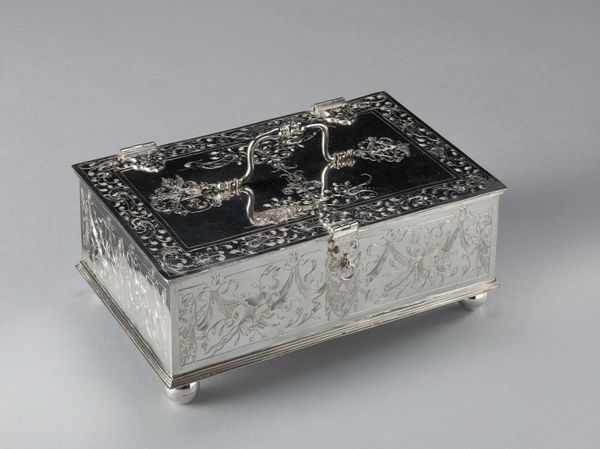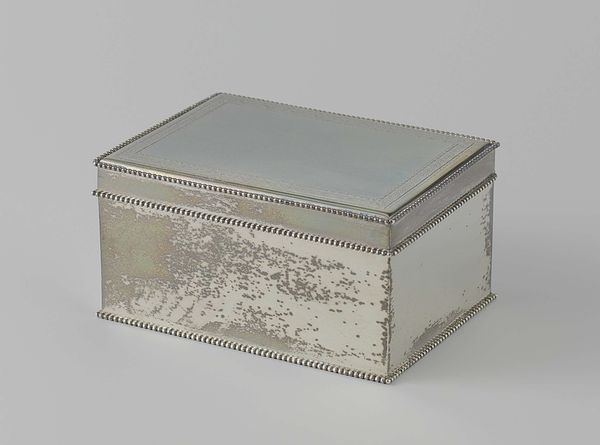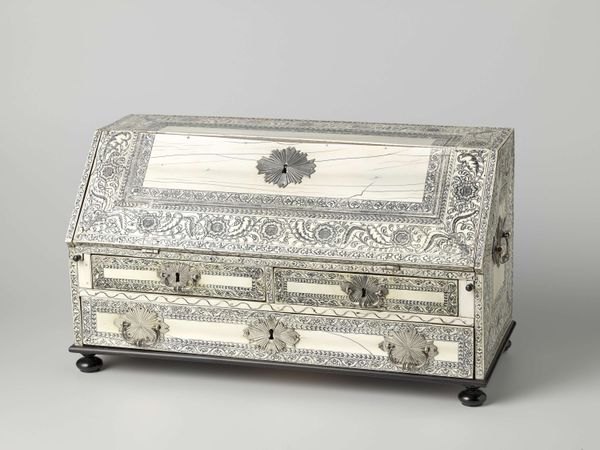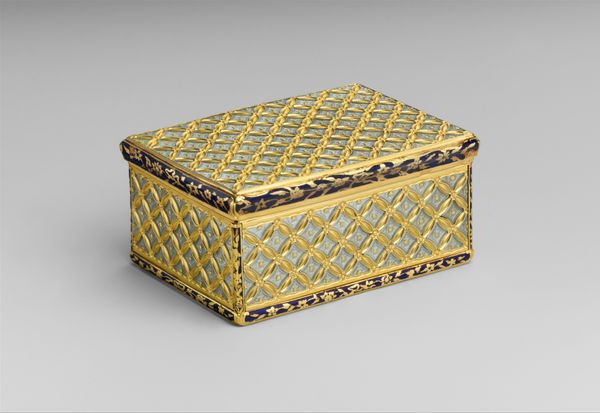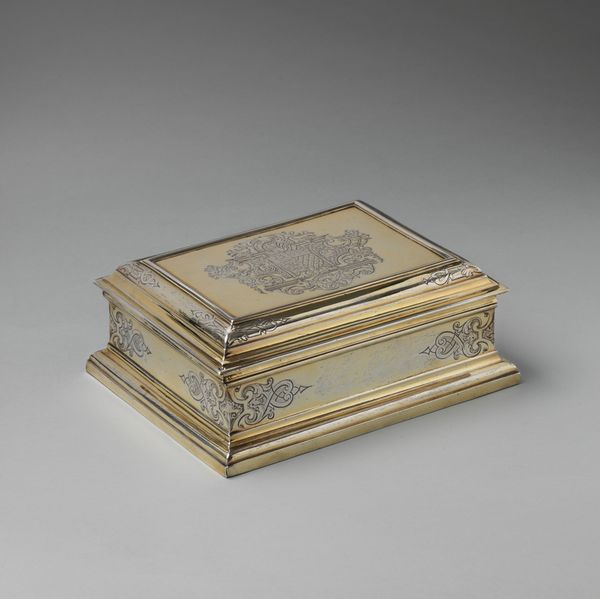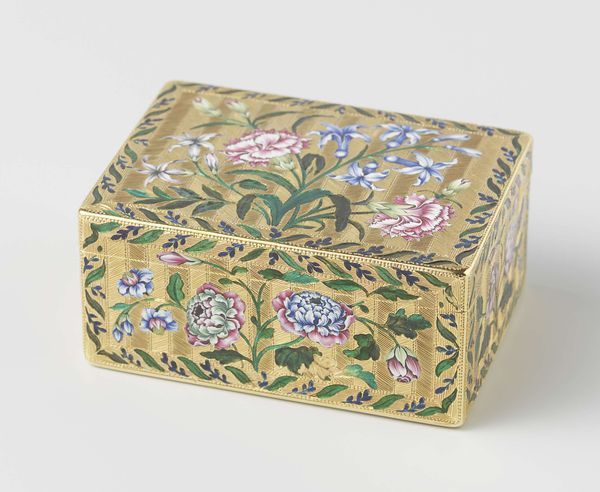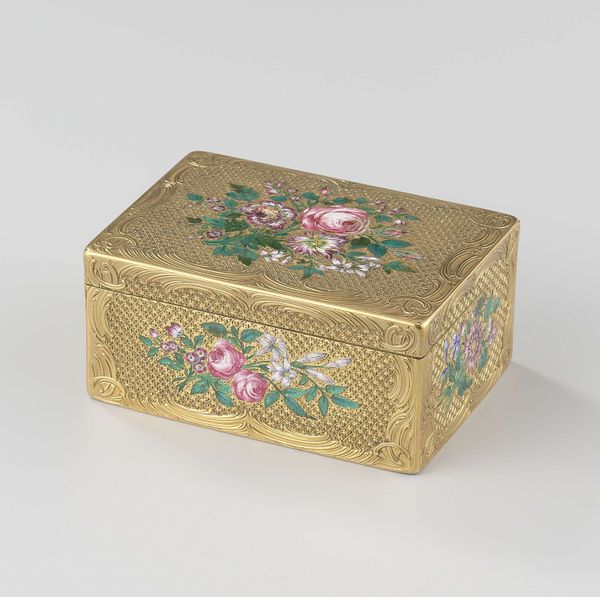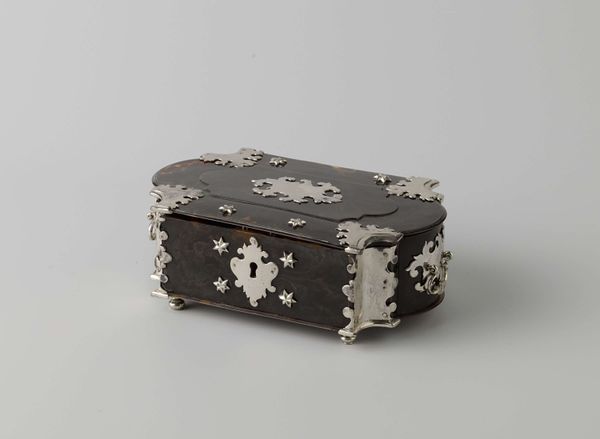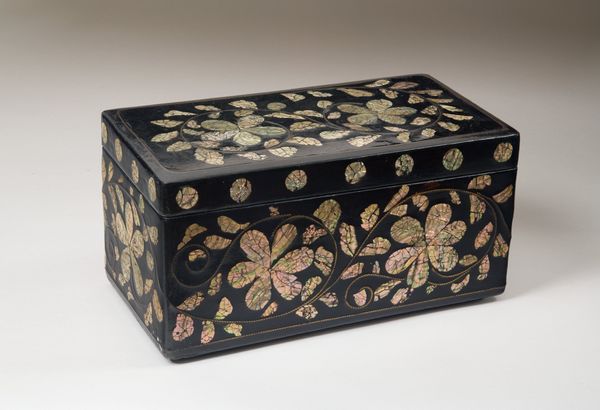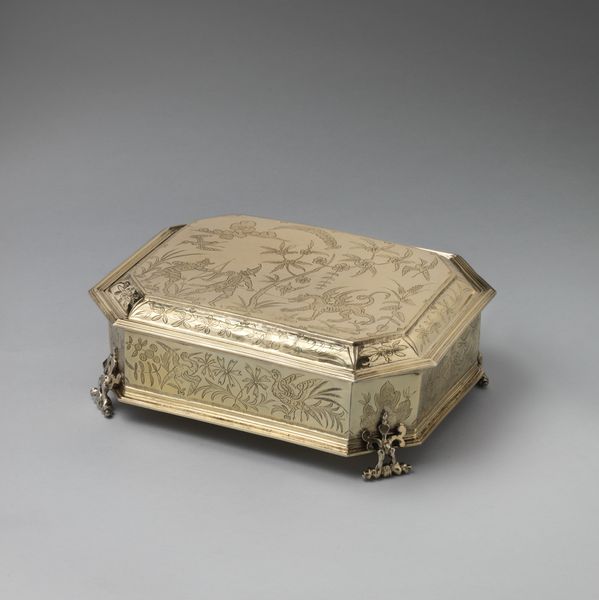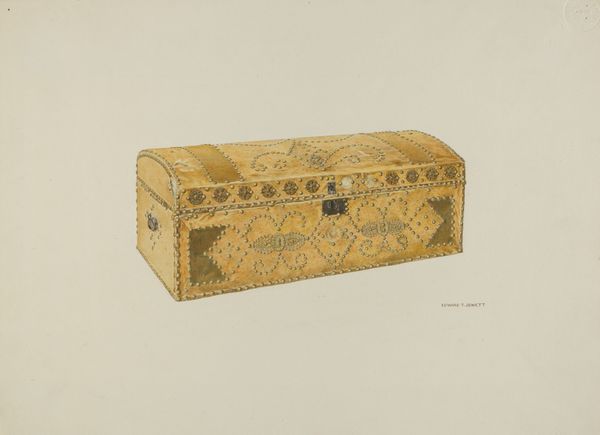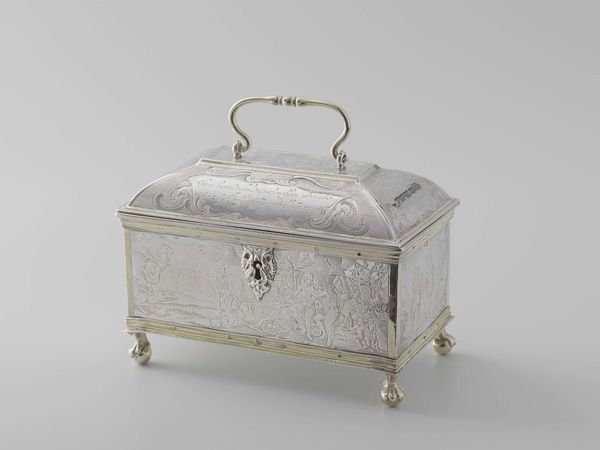
Dimensions: height 13.9 cm, width 24.6 cm, depth 13.8 cm
Copyright: Rijks Museum: Open Domain
Curator: Look at this lovely Rococo tea chest, believed to be from 1785. The maker is Pieter Adolf Bruné, a delightful name, don’t you think? It's fashioned from silver and wood, a curious combination really. Editor: It does have a precious sort of feel, doesn't it? Almost intimidatingly pristine. You can sense the kind of status tea had at the time just by looking at it! I imagine it locked away somewhere, under strict surveillance. Curator: Well, tea was a status symbol. I bet this wasn’t casually placed on any old table. It presents us with some interesting visual relationships: the piercing silver fretwork exterior that contains the subdued plushness of the interior. It is also composed of contrasting colors and the three silver containers nested inside the azure. Editor: Absolutely, it’s almost as though the artisan set up a dichotomy. We have the intricate openwork lattice giving a certain lightness. Almost lace-like! A stark contrast to the solid, slightly severe, cuboid silver tea caddies nestled inside. There's such controlled exuberance to the Rococo style and the craftsman does make us of geometry: there is an ever-repeating rhomboid, punctuated with rosettes that soften up all those lines! Curator: A bit like the controlled explosion of a good, strong cuppa, maybe? What fascinates me is what's *not* seen. What brand of tea went in here? Who was sharing it? Editor: Such questions. More abstract thoughts really, like what did tea-time etiquette really entail in the era in question. So many social norms built up around it. Was it a sign of wealth or relaxation? Curator: Wealth *and* connection. Sharing a brew was *the* social lubricant! A chance to bond. It’s about something beyond silver and refined design, it holds stories of laughter, quiet talks, secrets perhaps. Editor: Indeed. It leaves me wondering what sorts of secrets were held in the hearts of those sipping that tea... perhaps mysteries locked away, like this Rococo tea chest holds the aroma of a time long past.
Comments
Bruné was a brother-in-law of Christoffel Mittscherlich, the leading assistant of Johannes Schiotling. This chest contains three canisters, two for tea and one for mixing. Tea was expensive and tea chests were therefore often fitted with a lock. Here, the keyhole is covered by a small ribbon-shaped lock plate from which musical instruments are suspended.
Join the conversation
Join millions of artists and users on Artera today and experience the ultimate creative platform.
